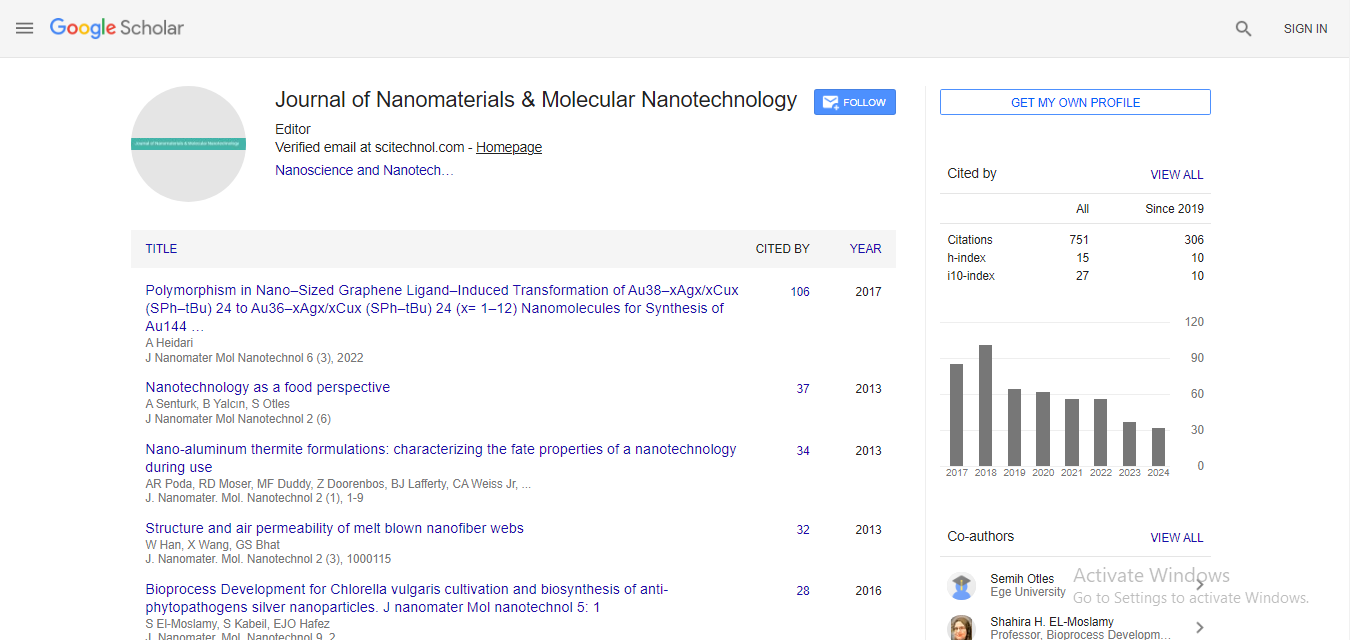A 3D microfibrous scaffold for inducing mesenchymal condensation during chondrogenic development
In Gul Kim
Seoul National University Hospital, South Korea
: J Nanomater Mol Nanotechnol
Abstract
Mesenchymal cell condensation is an essential step for chondrogenic development. However current 3D cell culture models used for chondrogenesis pay little attention to the aggregation into a condensed mass of cells. In this study, we fabricated a PLGA/PLA based microfiber scaffold and coated them with decellularized ECM from human lung fibroblasts (hFDM). Those scaffolds were then conjugated with heparin via EDC chemistry and subsequently immobilized with TGF-β1. Human umbilical cord blood-derived mesenchymal stem cells (UCB-MSCs) were cultured in each scaffold and subjected to chondrogenic differentiation for 28 days in vitro. The results showed that UCM-MSCs spread well and aggregated along the hFDM coated microfibers at 7 days. Both hFDM and hFDM/TGF-β1 groups exhibited significantly more synthesis of glycosaminoglycan (GAG) and much better upregulation of chondrogenic markers expression. A mechanistic study in gene and protein level indicated that FAK was involved at the early stage of cell adhesion and cell-cell contact-related markers, N-cadherin and NCAM, were highly up-regulated at later time point. In addition histological analysis proved that hFDM/ TGF-β1 group was the most effective in forming neocartilage tissue in a rabbit articular cartilage defect model. Taken together, this study demonstrates not only the positive effect of hFDM on chondrogenesis of MSCs and cartilage repair but also provides an important insight toward the significance of in vitro mesenchymal condensation on chondrogenic development of MSCs
 Spanish
Spanish  Chinese
Chinese  Russian
Russian  German
German  French
French  Japanese
Japanese  Portuguese
Portuguese  Hindi
Hindi 



